Abstract
The transfer of thoracic duct lymphocytes from sheep inoculated 14 days, but not 7 days previously with bluetongue virus into their monozygotic twin resulted in some protection from challenge with bluetongue virus. T cell enrichment of the 14 day thoracic duct lymphocyte population resulted in a similar effect, indicating the T cell basis of the observed protection. Animals recovered from infection with bluetongue virus type 3 and which received thoracic duct lymphocytes from an identical twin recently infected with the same bluetongue virus type were protected from challenge with bluetongue type 4. These observations suggest that T lymphocytes play an important role in protection against bluetongue virus.
Full text
PDF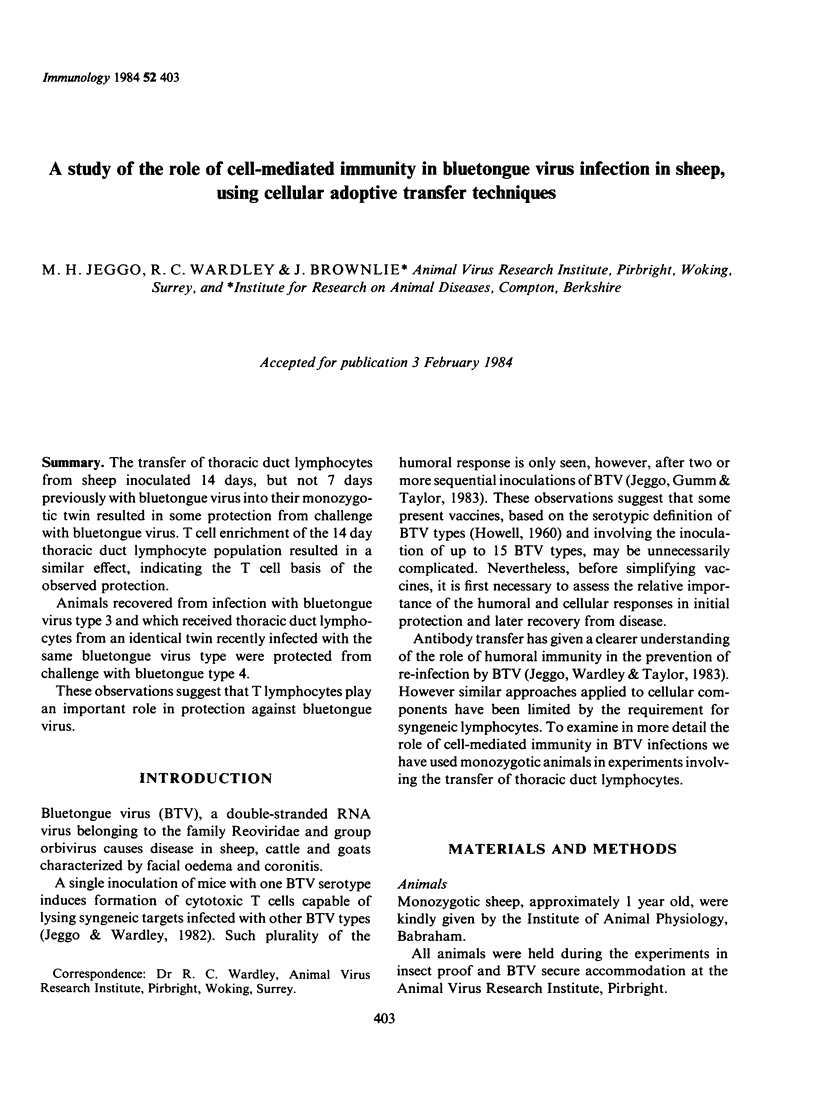
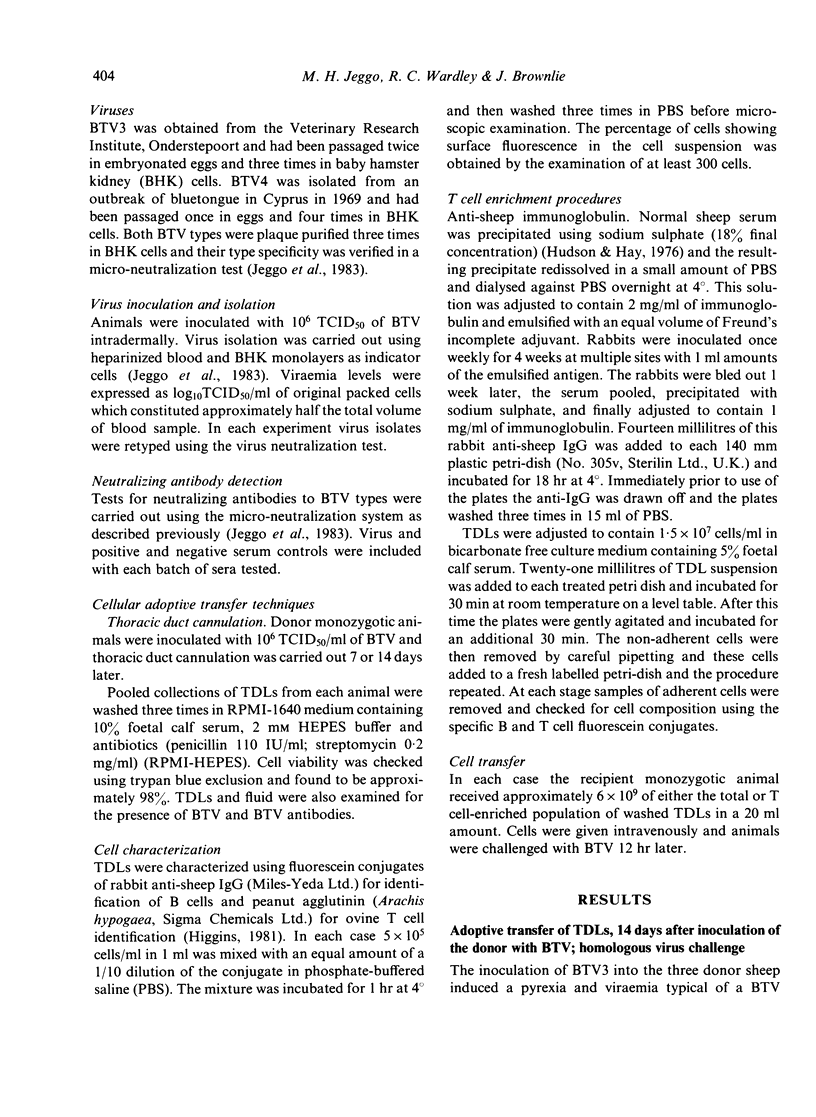
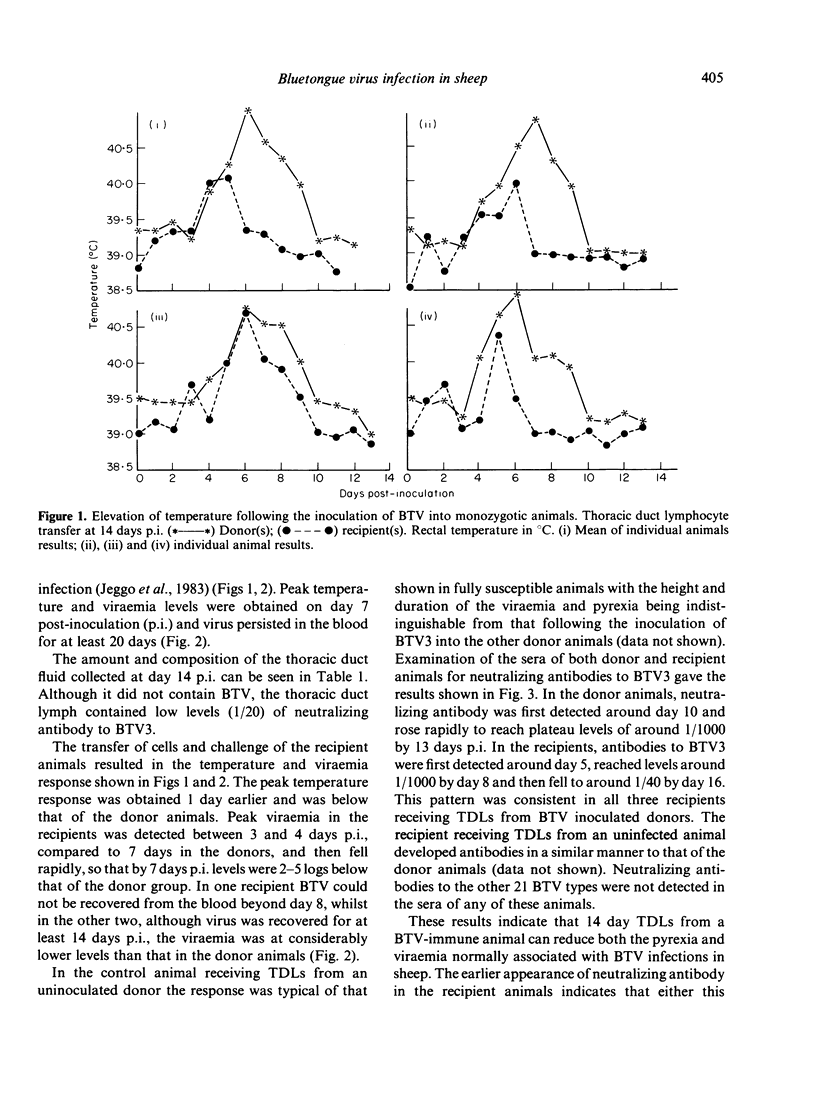
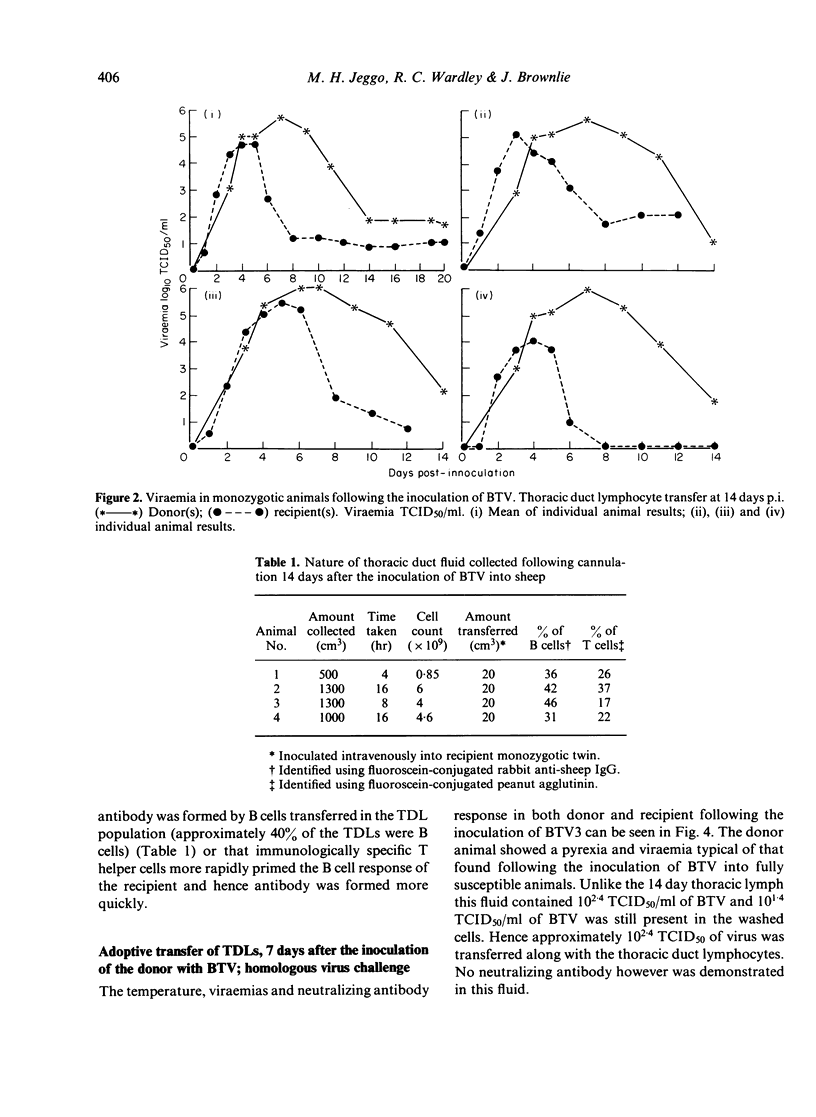
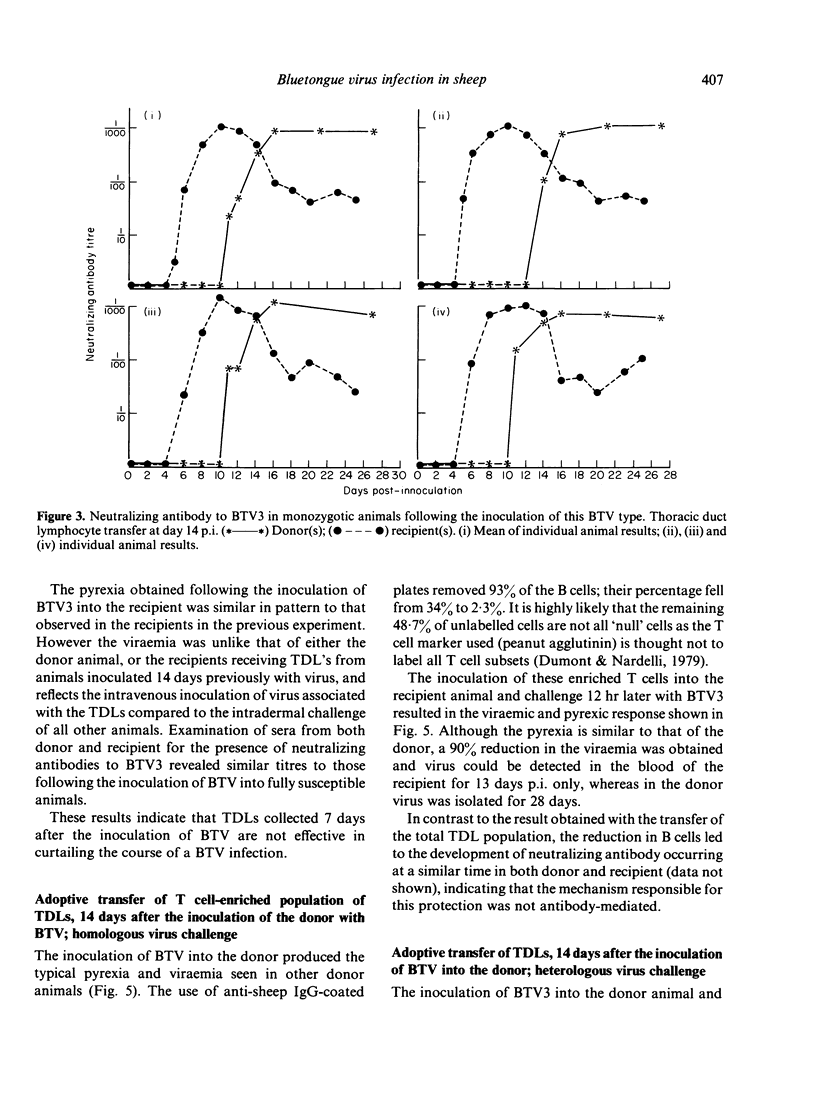
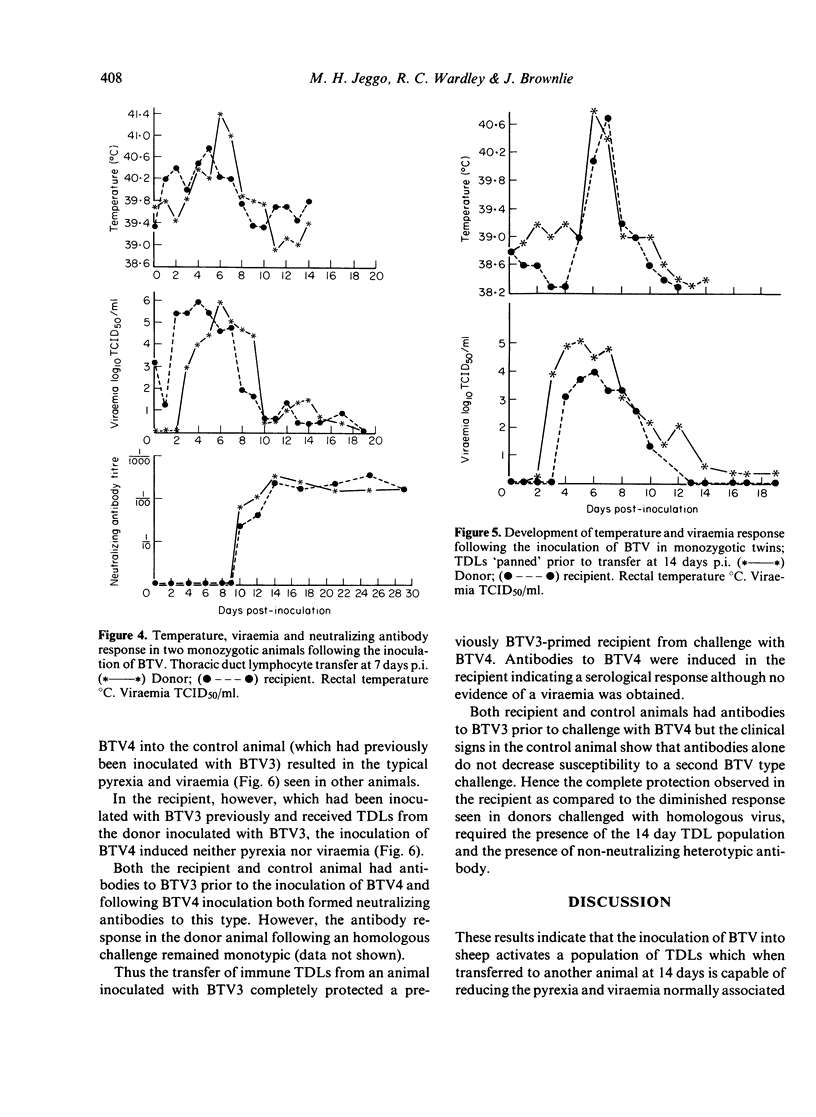
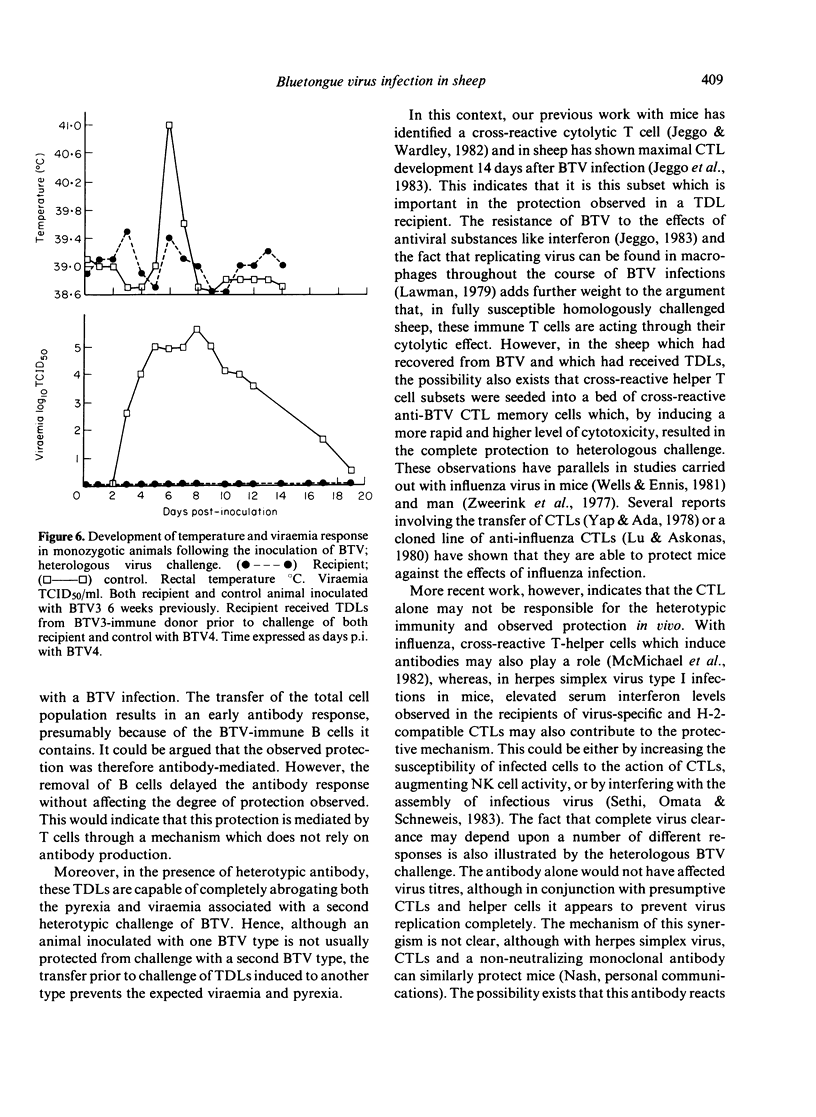
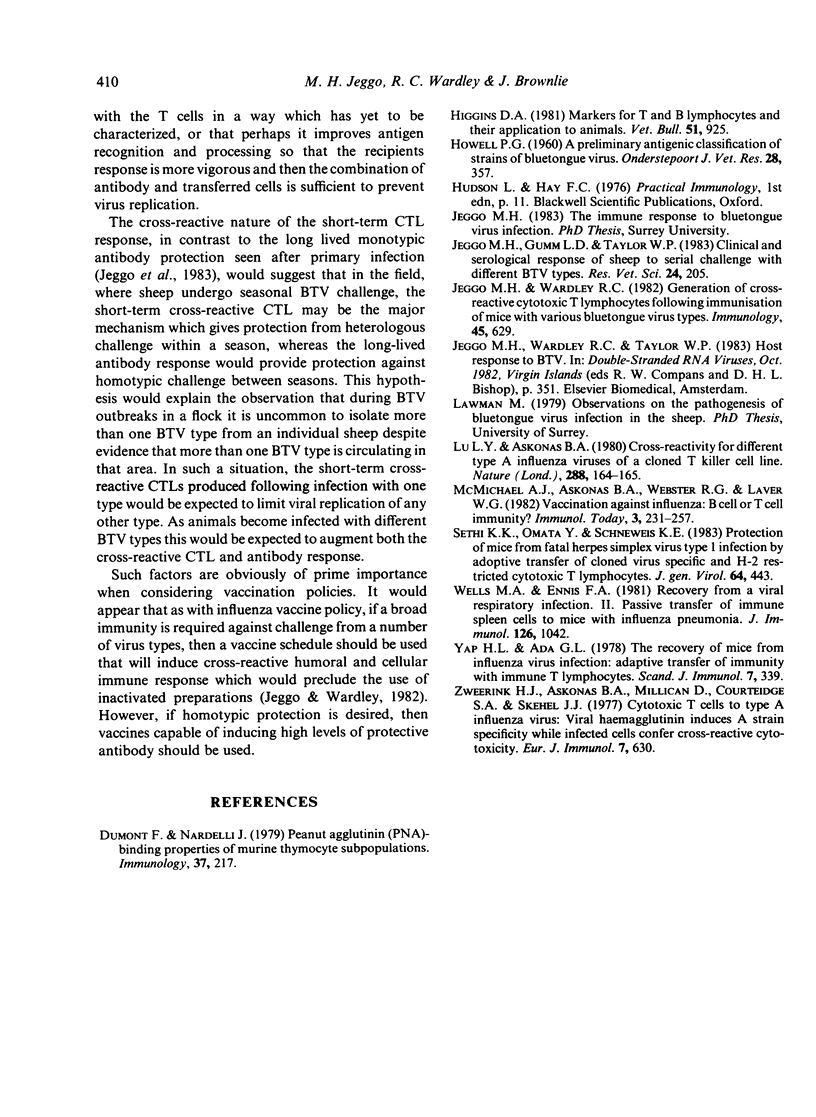
Selected References
These references are in PubMed. This may not be the complete list of references from this article.
- Dumont F., Nardelli J. Peanut agglutinin (PNA)-binding properties of murine thymocyte subpopulation. Immunology. 1979 May;37(1):217–224. [PMC free article] [PubMed] [Google Scholar]
- Jeggo M. H., Gumm I. D., Taylor W. P. Clinical and serological response of sheep to serial challenge with different bluetongue virus types. Res Vet Sci. 1983 Mar;34(2):205–211. [PubMed] [Google Scholar]
- Jeggo M. H., Wardley R. C. Generation of cross-reactive cytotoxic T lymphocytes following immunization of mice with various bluetongue virus types. Immunology. 1982 Apr;45(4):629–635. [PMC free article] [PubMed] [Google Scholar]
- Lu L. Y., Askonas B. A. Cross-reactivity for different type A influenza viruses of a cloned T-killer cell line. Nature. 1980 Nov 13;288(5787):164–165. doi: 10.1038/288164a0. [DOI] [PubMed] [Google Scholar]
- Sethi K. K., Omata Y., Schneweis K. E. Protection of mice from fatal herpes simplex virus type 1 infection by adoptive transfer of cloned virus-specific and H-2-restricted cytotoxic T lymphocytes. J Gen Virol. 1983 Feb;64(Pt 2):443–447. doi: 10.1099/0022-1317-64-2-443. [DOI] [PubMed] [Google Scholar]
- Wells M. A., Ennis F. A., Albrecht P. Recovery from a viral respiratory infection. II. Passive transfer of immune spleen cells to mice with influenza pneumonia. J Immunol. 1981 Mar;126(3):1042–1046. [PubMed] [Google Scholar]
- Zweerink H. J., Askonas B. A., Millican D., Courtneidge S. A., Skehel J. J. Cytotoxic T cells to type A influenza virus; viral hemagglutinin induces A-strain specificity while infected cells confer cross-reactive cytotoxicity. Eur J Immunol. 1977 Sep;7(9):630–635. doi: 10.1002/eji.1830070910. [DOI] [PubMed] [Google Scholar]


